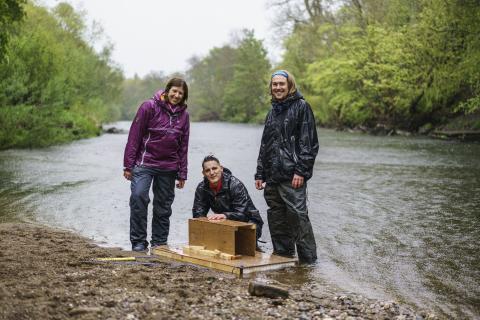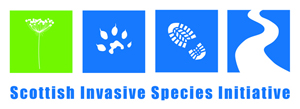Mink are on the move – can you help us stop them in their tracks?

We are looking for more volunteers to come forward to help monitor for mink which are on the move this month after breeding earlier in the year.
Juvenile American mink are now leaving their home territories and striking out on their own - meaning that this is a crucial time for detecting and controlling them before they establish in new areas and impact on our native wildlife there.
The invasive American mink was brought to Scotland for fur-farming and has been living wild in the countryside for over 50 years. They are opportunistic and ferocious hunters’ taking whatever prey is available to them - often killing more than they require for food at that time. Their presence in the countryside can have a devastating effect on native Scottish wildlife, particularly ground nesting birds and iconic water vole populations.
Monitoring a mink raft requires no previous experience and is easy to do. The project team provide all equipment, full training at the start, will help set the raft up and are always contactable if you need help or advice. The raft contains a clay pad hidden inside a tunnel and the tell-tale sign of mink presence is when they leave their footprints in the clay as they explore inside the tunnel. Once a raft is set up the volunteer just needs to check it for footprints every couple of weeks. If mink are detected a live-capture trap is set and the mink caught before being humanely despatched by the project team.
Professor Xavier Lambin, from the University of Aberdeen explained why this is a critical time of year for mink control; “We’ve undertaken a lot of research into mink behaviour and dispersal patterns and we know that mink are very effective colonisers of new areas. During late summer and early Autumn juvenile mink can travel large distances to take up new territories - while most travel around 20km, 20% of young mink will travel up to 80km or more to new areas! This means mink can move into different river catchments and re-colonise previously cleared areas, so at this time of year we need to be really vigilant.”
Scottish Invasive Species Initiative Project Manager, Callum Sinclair, added; “Our project is working at a large scale across much of northern Scotland and that means we are monitoring for mink across many river catchments, but this is only effective if we have a comprehensive network of monitoring rafts. We still have gaps in our coverage and so are always on the look-out for volunteers to adopt mink rafts and traps in specific key areas. The success of our mink control work hangs on the support and dedication of our network of volunteers helping monitor for mink presence and support their removal.”
Key areas where help is needed include;
- Moray coast and in central Speyside; Burghead, Lossiemouth, Buckie and Portsoy, and also in Aberlour, Ballindalloch, Cromdale and Grantown-on-Spey, please get in touch for more information by emailing [email protected] or calling 07493 272898.
- North Aberdeenshire coast, between Banff and Fraserburgh and also Peterhead to Forvie, please get in touch for more information by emailing [email protected] or calling 07483 319448.
- Donside area of Aberdeenshire; the Inverurie to Kintore to Dyce corridor and also the Old Rayne/Insch area, please get in touch with Estee Farrar for more information by emailing [email protected] or calling 07769 314130.
- Black Isle; Cromarty, Invergordon, Alness and Evanton areas, should get in touch for more information by emailing [email protected]
